Mike Ashley’s British Library Science Fiction Classics, Volumes 1-3: Moonrise, Lost Mars, and Menace of the Machine
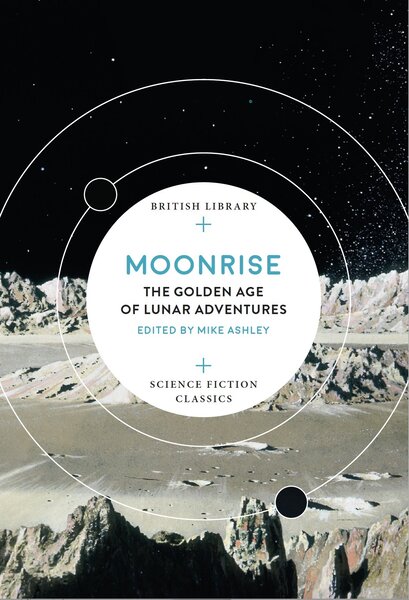 |
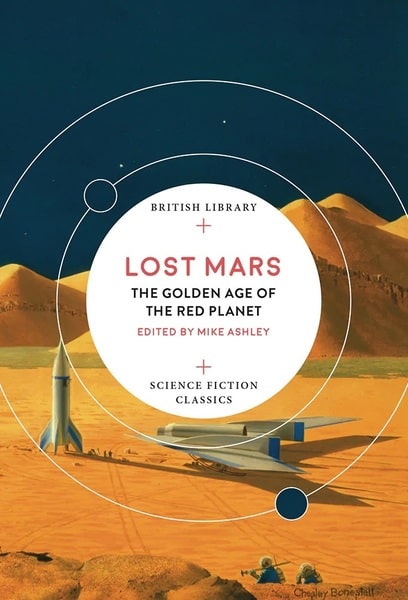 |
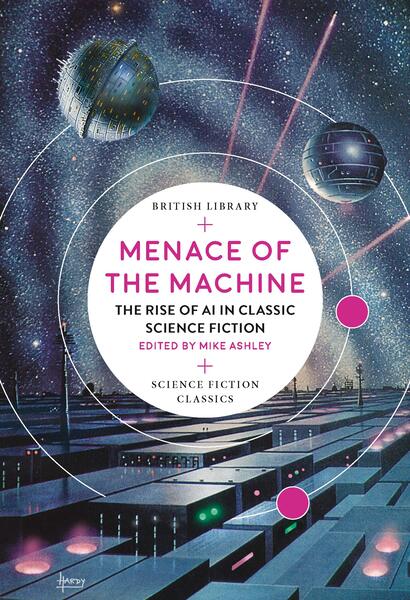 |
The first three anthologies in the British Library Science Fiction Classics: Moonrise,
Lost Mars, and Menace of the Machine. Covers by Chesley Bonestell and David A. Hardy
Two weeks ago I gazed in wonder at Mike Ashley’s 10-volume anthology series of science fiction from the pre-spaceflight era, the British Library Science Fiction Classics.
The first three in the series — Moonrise: The Golden Age of Lunar Adventures, Lost Mars: The Golden Age of the Red Planet, and Menace of the Machine: The Rise of AI in Classic Science Fiction — make an impressive set, containing nearly three dozen stories originally published between 1887 – 1965 by H.G. Wells, Gordon R. Dickson, John Wyndham, Edmond Hamilton, Arthur C. Clarke, Stanley G. Weinbaum, Ray Bradbury, E. C. Tubb, Walter M. Miller, Jr., J. G. Ballard, Ambrose Bierce, Isaac Asimov, Henry Kuttner and Catherine Moore, Brian W Aldiss, Murray Leinster, and many others. Each volume also includes a fascinating and impeccably researched introduction by Ashley that’s sure to whet your appetite.
Let’s take a closer look. (Warning: entirely superfluous pulp magazine covers ahead).
[Click the images for British Library versions.]
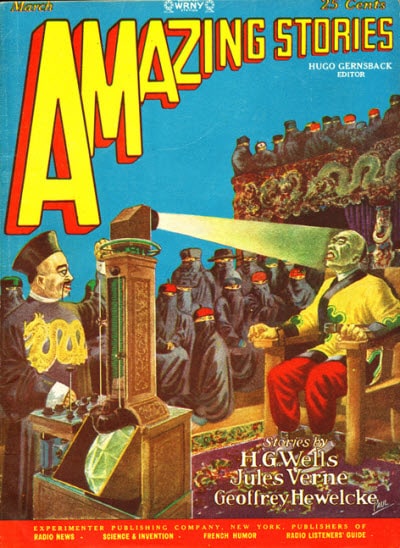 |
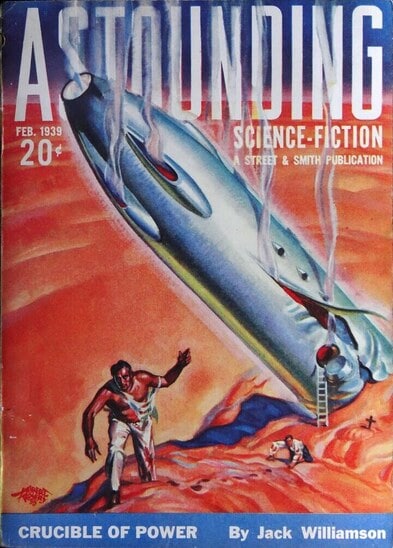 |
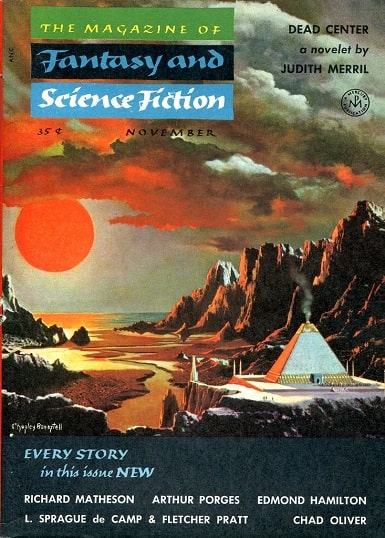 |
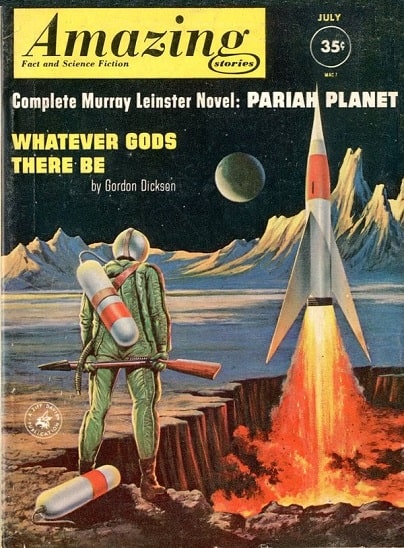 |
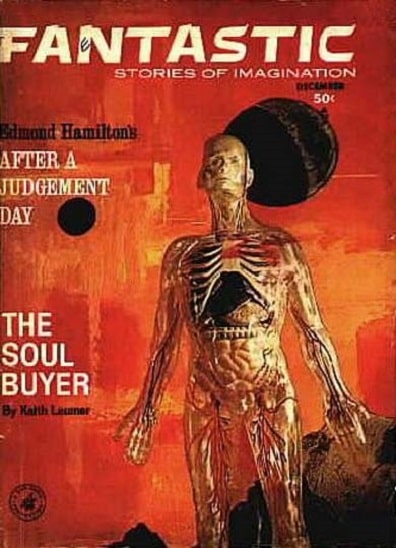 |
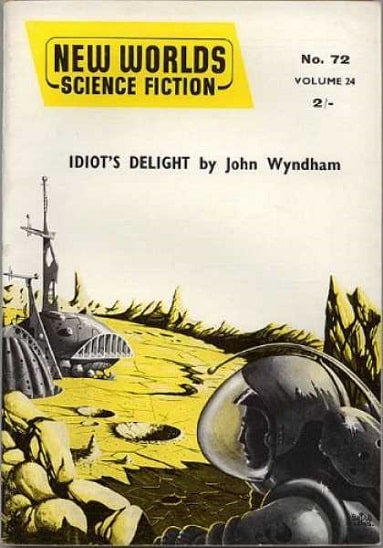 |
Six of the SF pulp and digest magazines containing stories reprinted in Moonrise
Because I can’t resist needlessly burdening this article with beautiful covers, I’ve curated a selection for each volume, featuring half a dozen of the original sources. Above are the magazines that contained six of the stories included in Moonrise: The Golden Age of Lunar Adventures.
One of my criticisms of some recent reprint collections by anthologists like Neil Clarke (and others) has been the lack of fiction from before the year 2,000. These young anthologists make me feel old.
Well, Mike Ashley makes me feel like a spry spring chicken. Although he’s only a decade or so older than me (born 1948), his taste tends to skew even older, and his anthologies typically include a rich selection of pre-1900 fiction. He’s probably the last major anthologist still mining pre-pulp SF in any real quantity. These books are no exception, and each contains 3-4 stories published before 1930.
Moonrise: The Golden Age of Lunar Adventures contains a novel excerpt from H. G. Wells (from First Men in the Moon), Arthur C. Clarke’s timeless classic “The Sentinel” (basis for the movie 2001: A Space Odyssey), plus stories by Judith Merril, William F. Temple, Gordon R. Dickson, John Wyndham, Edmond Hamilton, and others. Publishers Weekly called it “a must-read for lovers of classic science fiction”:
A robust collection of 12 short science fiction classics representing the era when the moon was the center of the fantastic literary imagination… Entries include the poetic yet soporific (“Sunrise on the Moon” by John Munro), the action-packed (“Lunar Lilliput” by William F. Temple and “Nothing Happens on the Moon” by Paul Ernst), and the tragically poignant (“Dead Centre” by Judith Merril and “Whatever Gods There Be” by Gordon R. Dickson). This anthology is a must-read for lovers of classic science fiction.
Here’s the complete TOC.
Introduction by Mike Ashley
“Dead Centre” by Judith Merril (The Magazine of Fantasy and Science Fiction, November 1954)
“A Visit to the Moon” by George Griffith (Pearson’s Magazine, January 1900)
“Sunrise on the Moon” by John Munro (Cassell’s Family Magazine, October 1894)
First Men in the Moon (excerpt) by H. G. Wells (1901)
“Sub-Satellite” by Charles Cloukey (Amazing Stories, March 1928)
“Lunar Lilliput” by William F. Temple (Tales of Wonder #2, 1938)
“Nothing Happens on the Moon” by Paul Ernst (Astounding Science-Fiction, February 1939)
“Whatever Gods There Be” by Gordon R. Dickson (Amazing Stories, July 1961)
“Idiot’s Delight” by John Wyndham (New Worlds Science Fiction, #72 June 1958)
“After a Judgement Day” by Edmond Hamilton (Fantastic Stories of Imagination, December 1963)
“The Sentinel” by Arthur C. Clarke (10 Story Fantasy, Spring 1951)
Moon tales not your thing? On to Mars we go, with Lost Mars: The Golden Age of the Red Planet!
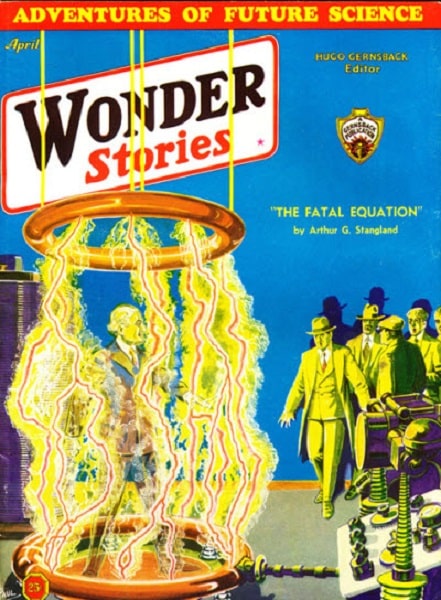 |
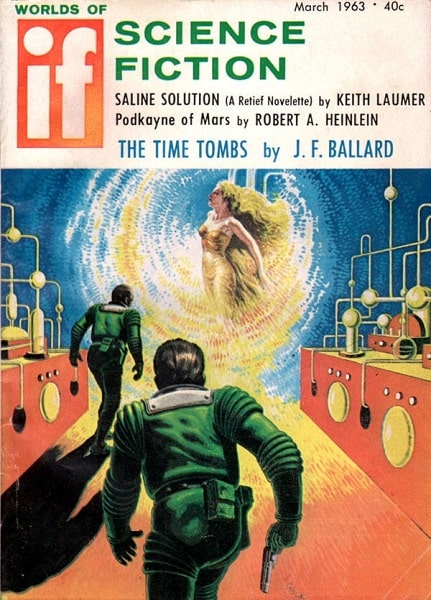 |
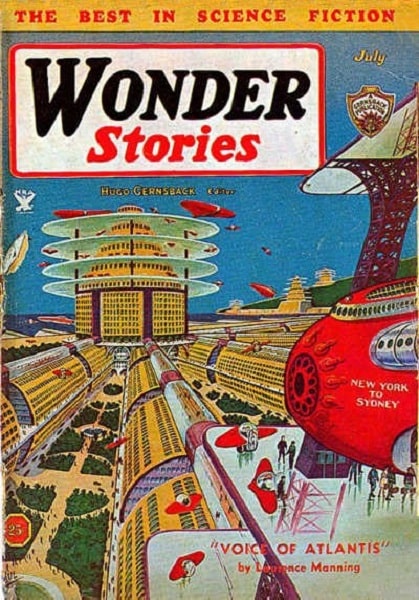 |
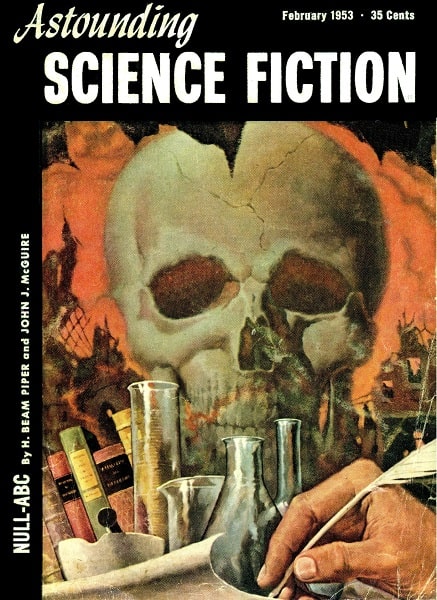 |
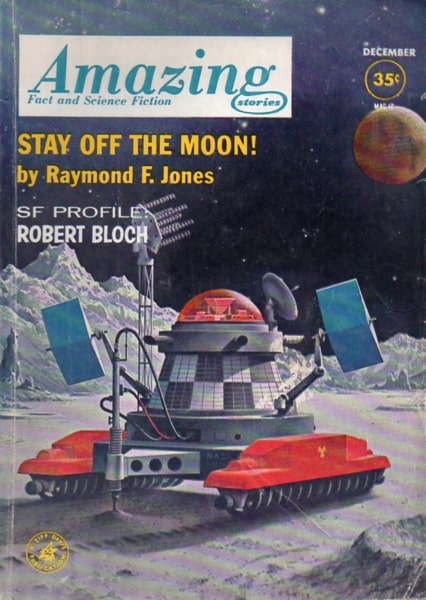 |
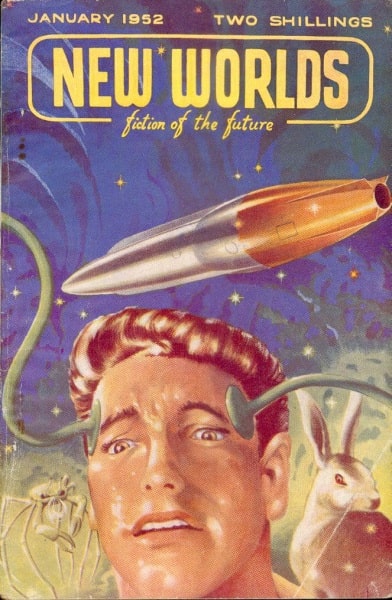 |
Some of the magazines containing stories reprinted in Lost Mars
Lost Mars: The Golden Age of the Red Planet steps further out into the Solar System, crossing tens of millions of miles to our famous celestial neighbor. It contains a fine mix of classics — including Stanley G. Weinbaum’s famous “A Martian Odyssey,” H. G. Wells’ The Crystal Egg,” and a Martian Chronicles tale by Ray Bradbury, “Ylla” — plus less-frequently anthologized stories by P. Schuyler Miller, E. C. Tubb, Walter M. Miller, Jr., J. G. Ballard, and others.
Paul Di Filippo has an enthusiastic review at Locus Online, saying in part:
Once upon a time… our field featured many expert spelunkers of pulp, editors who could delve deep into the substrata of the field and return with forgotten treasures… we are lucky that a scholar such as Mike Ashley still perseveres, bringing us buried gems that only long hours at the British Library and other troves of moldering paper can still summon up…
[Ashley] assembles a nice mixed bill of fare, including some essential and well-known items along with some deserving rarities… [In] Wells’s “The Crystal Egg” we marvel afresh at Wells’s droll humor and insight into human nature, and also realize that his crystal egg that provides surreal glimpse of Martian society is quintessentially Lovecraftian!…
P. Schuyler Miller, a veteran and pioneer in the genre who is too little recalled these days, proves himself ahead of the rest of his 1930s peers with “The Forgotten Man of Space.” Part brutal Robinsonade, with a convincing invented ecology, and part anti-imperialism parable, it is never predictable or stale. Most famous of all the selections and really impossible to omit, Weinbaum’s “A Martian Odyssey” now seems like a cousin to the Miller piece, and continues to hold up beautifully nearly 85 years after publication…
“Measureless to Man” finds Marion Zimmer Bradley stepping into the shoes of Leigh Brackett, queen of the planetary romances. Andrew Slayton, of a human generation native to Mars, is part of an expedition to uncover the lost city of Xanadu. But instead he helps to discover the strangely surviving Martians themselves, risking his life and sanity in the process.
The next two stories — ”Without Bugles” by E.C. Tubb and “Crucifixus Etiam” by Walter M. Miller, Jr. — belong to what might be termed the “Mars Is Hell!” variety. As the true physical challenges of the planet began to replace the blithe assumptions of Edgar Rice Burroughs, writers went for a gritty, naturalistic approach, limning the rigors of colonizing Mars. In Tubb’s tale, it’s a kind of silicosis that wears men down, while in Miller we get atrophy of the lungs due to prosthetic implants. Both stories find some small redemptions in the sacrifices. That John W. Campbell was the editor of the grim Miller tale is testament to Campbell’s more cynical side.
And finally comes “The Time-Tombs,” J.G. Ballard’s masterful evocation of melancholy and Freudian psychodramas as our antihero Shepley, living an outlaw’s life scavenging among the crypts of the Martians, falls in love with a “cyber-architectonic” ghost.
This superlative set of stories shows us how the Red Planet has served both as a character in its own right — its physical realities conjured up vividly as a counterpart to Earth’s beneficent clime — and as a foil for the many kinds of drama that humans inflict on the landscape of any place they choose to inhabit.
Here’s the complete Table of Contents.
Introduction by Mike Ashley
“The Crystal Egg” by H. G. Wells (The New Review, May 1897)
“Letters from Mars” by W. S. Lach-Szyrma (Cassell’s Family Magazine, April 1887)
“The Great Sacrifice” by Geo. C. Wallis (The London Magazine, June 1903)
“The Forgotten Man of Space” by P. Schuyler Miller (Wonder Stories, April 1933)
“A Martian Odyssey” by Stanley G. Weinbaum (Wonder Stories, July 1934)
“Ylla” by Ray Bradbury (Maclean’s, January 1950)
“Measureless to Man” by Marion Zimmer Bradley (Amazing Stories, December 1962)
“Without Bugles” by E. C. Tubb (New Worlds, #13 January 1952)
“Crucifixus Etiam” by Walter M. Miller, Jr. (Astounding Science Fiction, February 1953)
“The Time-Tombs” by J. G. Ballard (If, March 1963)
Tired of the arctic cold of Mars? Let’s heat things up with some warmongering robots in Menace of the Machines.
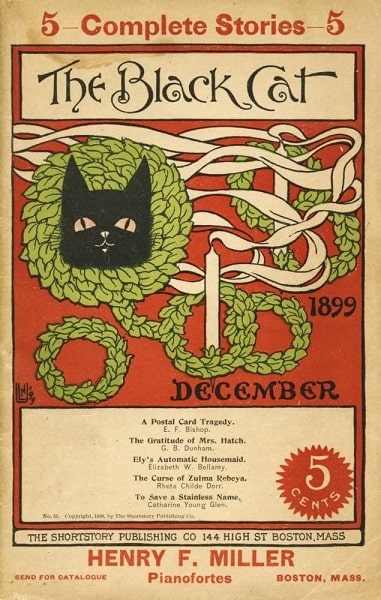 |
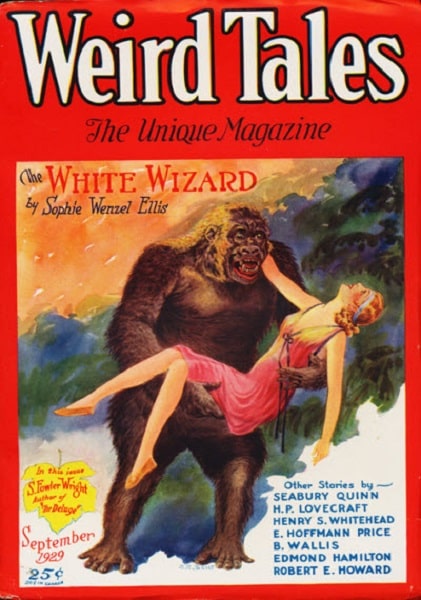 |
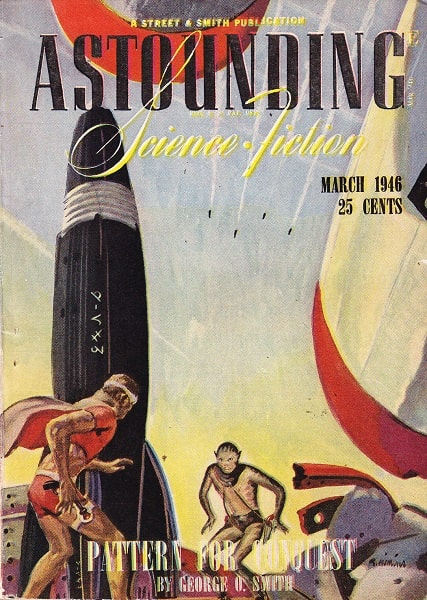 |
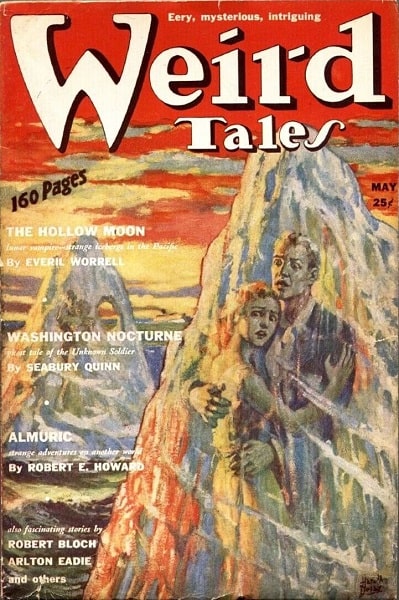 |
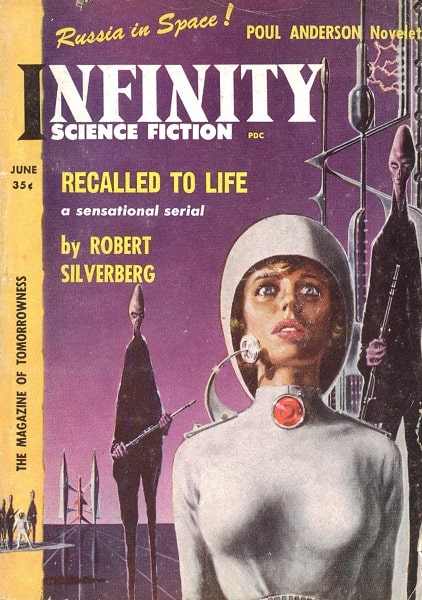 |
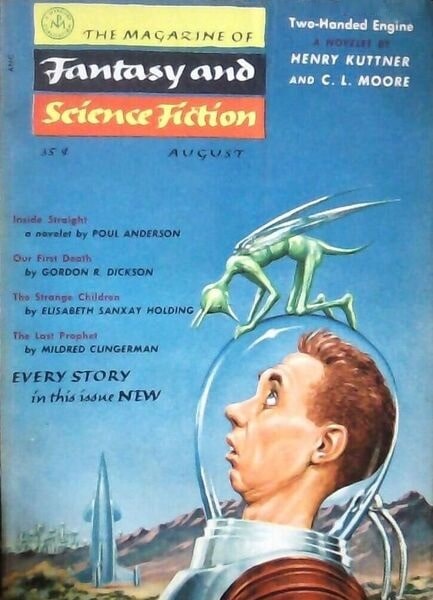 |
The original magazine sources for six of the stories in Menace of the Machine
Menace of the Machine contains a generous assortment of 14 tales, including an I, Robot story by Isaac Asimov; E.M. Forster’s timeless classic “The Machine Stops;” one of the most famous collaborations between Henry Kuttner and Catherine Moore, “Two Handed Engine; “But Who Can Replace a Man?” by Brian W Aldiss; “A Logic Named Joe” by Murray Leinster, and stories by S Fowler Wright, Arthur C. Clarke, and many others.
Graham Andrews has a detailed look at The BSFA Review, saying in part:
The earliest anthology I know of SF stories about artificial intelligence in general as opposed to humanoid robots in particular is Science Fiction Thinking Machines (1954), edited by Groff Conklin. None of those stories appear in Ashley’s book, which makes it an interesting thematic companion piece.
Ashley takes a more chronological approach than Conklin, with Adeline Knapp’s ‘The Discontented Machine’ (1894) – about a machine that calls its own wildcat strike – being the earliest (and also one of the best). Along the way, we are treated to such reclaimed treasures as ‘Automata’ (S. Fowler Wright: 1929) and ‘Rex’ (Harl Vincent: 1934). J. J. Connington’s ‘Danger in the Dark Cave’ (1938) fuses Golden Age detective fiction with what would now be called AI… With the instinct of self-preservation, and the means to fight back. ‘Efficiency’ (Perley Poore Sheehan & Robert H. Davis: 1917) is a quirky little one-act play.
For what it’s worth, my favourite selection is ‘But Who Can Replace a Man’ (1958), by the late and always to be lamented Brian W. Aldiss. I’ll leave you to decide where ‘menace’ comes into it. The most recent – comparatively speaking – story, Arthur C. Clarke’s fiendish ‘Dial F for Frankenstein’ (1964), was read and well-remembered by the young Tim (www) Berners-Lee. But the most precociously prophetic story is ‘A Logic Named Joe’ (1946) which deals with ‘logics’ (i.e. personal computers) and something called the ‘tank’ (i.e. the Internet)…
But it’s all extravagant fiction – right, fella? It couldn’t possibly become cold fact tomorrow! Excuse me, fella. My logic is calling me…
Here’s the full Table of Contents.
Introduction by Mike Ashley
“Moxon’s Master” by Ambrose Bierce (The San Francisco Examiner, April 16, 1899)
“The Discontented Machine” by Adeline Knapp (1894)
“Ely’s Automatic Housemaid” by Elizabeth Bellamy (The Black Cat, December 1899)
“The Mind Machine” by Michael Williams (All-Story Weekly, March 29, 1919)
“Automata” by S Fowler Wright (Weird Tales, September 1929)
“The Machine Stops” by E.M. Forster (The Oxford and Cambridge Review, November 1909)
“Efficiency” by Perley Poore Sheehan and Robert H. Davis (1917)
“Rex” by Harl Vincent (Astounding Stories, June 1934)
“Danger in the Dark Cave” by J. J. Connington (The Passsing Show, 10 December 1938)
“The Inevitable Conflict” by Isaac Asimov (Astounding Science Fiction, June 1950)
“Two Handed Engine” by Henry Kuttner and Catherine Moore (The Magazine of Fantasy and Science Fiction, August 1955)
“But Who Can Replace a Man?” by Brian W Aldiss (Infinity Science Fiction, June 1958)
“A Logic Named Joe” by Murray Leinster (Astounding Science Fiction, March 1946)
“Dial F for Frankenstein” by Arthur C. Clarke (Playboy, January 1965)
Here’s the complete list of the all ten anthologies in the British Library Science Fiction Classics:
Moonrise: The Golden Age of Lunar Adventures (348 pages, April 5, 2018) — cover by Chesley Bonestell
Lost Mars: The Golden Age of the Red Planet (224 pages, April 5, 2018) — cover by Chesley Bonestell
Menace of the Machine (347 pages, April 11, 2019) — cover by David A. Hardy
The End of the World and Other Catastrophes (328 pages, May 16, 2019) — cover by David A. Hardy
Menace of the Monster: Classic Tales of Creatures from Beyond (362 pages, September 12, 2019) — cover by Warwick Goble
Beyond Time: Classic Tales of Time Unwound (272 pages, October 17, 2019) — cover by Frederick Siebel
Born of the Sun: Adventures in Our Solar System (320 pages, August 6, 2020) — cover by Chesley Bonestell
Nature’s Warnings: Classic Stories of Eco-Science Fiction (352 pages, August 27, 2020) — cover uncredited
Spaceworlds: Stories of Life in the Void (336 pages, March 25, 2021) — cover uncredited
Future Crimes (320 pages, May 20, 2021) — cover uncredited
All ten volumes were published by British Library Publishing. Most have a cover price of £8.99 in paperback (Amazon charges $14.95-$16.95 in the US), and £2.99 for the digital versions (when available). The last three (Nature’s Warnings, Spaceworlds, and Future Crimes) are priced at £9.99.
I introduced this series with a look at all eleven titles from Mike Ashley (the ten anthologies above, plus one non-fiction book), and (as Todd McAulty) reviewed the first two in 2018.
Tales of Adventure and Exploration from the Pre-Spaceflight Era: Mike Ashley’s British Library Science Fiction Classics
From the Moon to Mars: The British Library Science Fiction Classics by Todd McAulty
Stay tuned for future installments where I hope to cover the remaining seven volumes.
See all of our recent New Treasures here.
Sigh. Now I have to find room for ten more books.
Ain’t that the truth. It’s almost as hard as finding the time to read them!